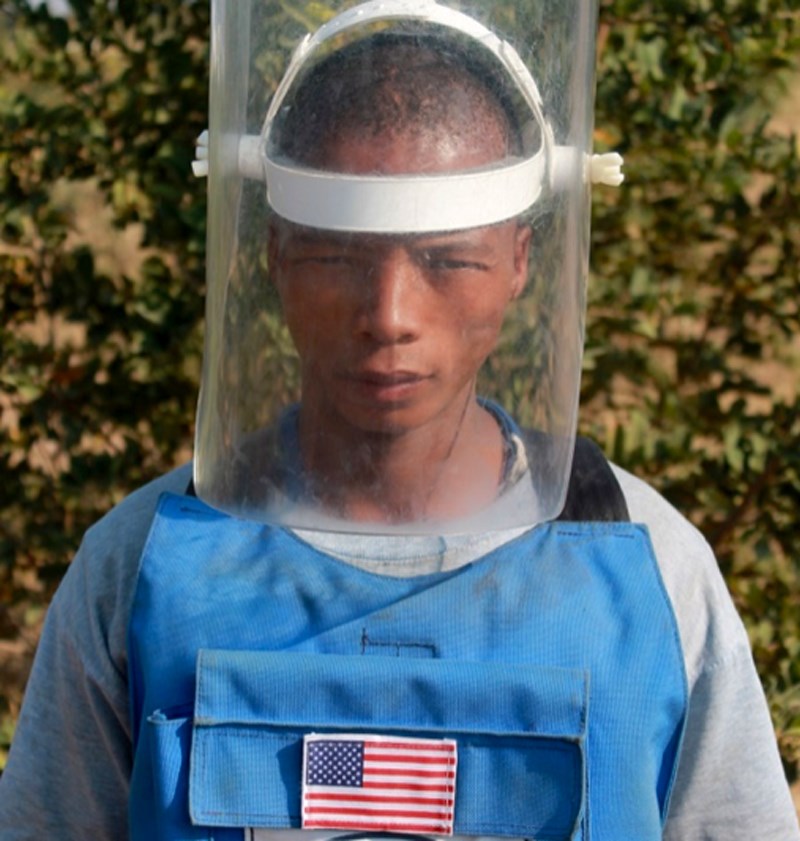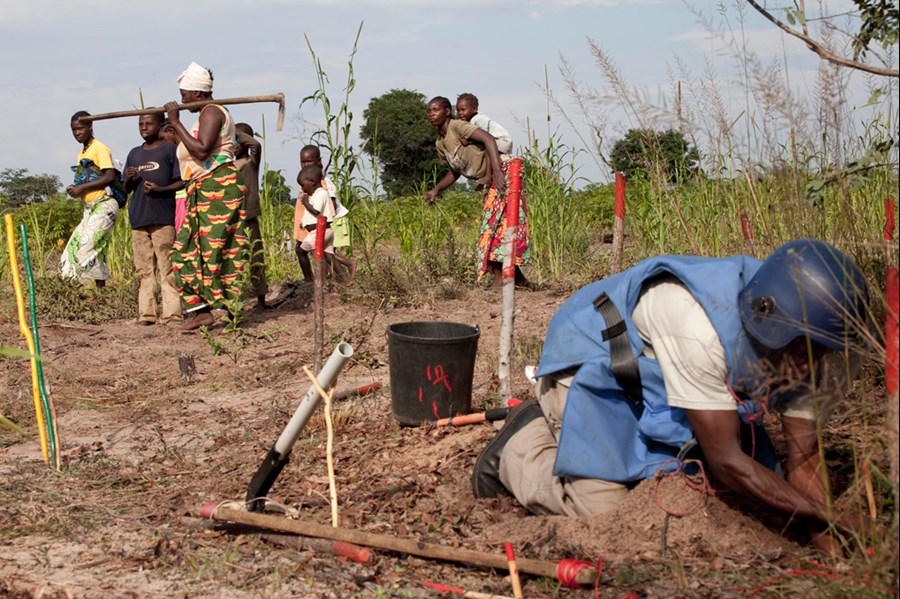Cuito Cuanavale, Angola—site of the largest battle on African soil since World War II and a potent symbol of Angola’s brutal civil war.
Thirty years ago, as the South African backed troops of the National Union for the Total Independence of Angola (UNITA) clashed with Angolan Government forces, supported by their Cuban and Soviet allies, Cuito Cuanavale became a flash point for the conflict within Angola and a proxy to the Cold War. Tens of thousands of mines were laid by the opposing sides to stop both infantry and armoured vehicles in devastating rounds of attack and counter-attack. The density of the minefields was so high that three decades on, their legacy still affects the daily life of Angolans.

Muti began working for HALO to create a safer future for his children
João Muti is not even old enough to remember the battle for Cuito Cuanavale but he is all too aware of the deadly remnants it left behind.
Muti belongs to the Khoi Khoi tribe, meaning ‘the real people.’ They have lived in Angola for over 1500 years but now their numbers are dwindling. Traditionally hunter-gatherers, the tribe made their home in the remote bush, without access to schools or medical care, but in 2014 they were granted new land by the government closer to Cuito Cuanavale. Relying on subsistence farming to support their families, they wanted to be able to expand their new land to cultivate crops and collect honey. However, as for many other settlements surrounding Cuito Cuanavale, the nearby minefields made this too dangerous. Tragically, Muti’s grandfather was killed when he stepped on a mine whilst walking in the area.
Muti was determined to create a safer future for his children, a future where they could use the land to grow food and hunt, so he began working for HALO as a deminer. Along with other locally employed men and women he has tackled some of the most complex and difficult minefields HALO has ever encountered. Landmines are designed to kill and maim but the way in which they were laid around Cuito Cuanavale created an inconceivably sinister and deadly legacy. Mines were stacked on top of mines and then linked to huge boxes of explosives buried nearby, meaning if stepped on, they would not only kill the person who triggered them, but anyone nearby.
The scale of the mine problem in Cuito Cuanavale is big but, with the right support, it can be solved. Since starting work in Angola in 1994, HALO has destroyed over 94,000 landmines across the country. Almost a third of them have come from Cuito Cuanavale alone and thousands more are known to be hidden beneath the ground here. The need to make this land safe for Muti and the hundreds of other families who live nearby is urgent. However, the drastic cut in funding from traditional donor governments for mine clearance in Angola meant that HALO had to stop demining in Cuito Cuanavale in 2017. On the 30th Anniversary of this historic battle, now is the time to refocus efforts and funding to clear the remaining landmine legacy in Angola before more decades pass and more innocent lives are lost.





 Visit our HALO USA website
Visit our HALO USA website
